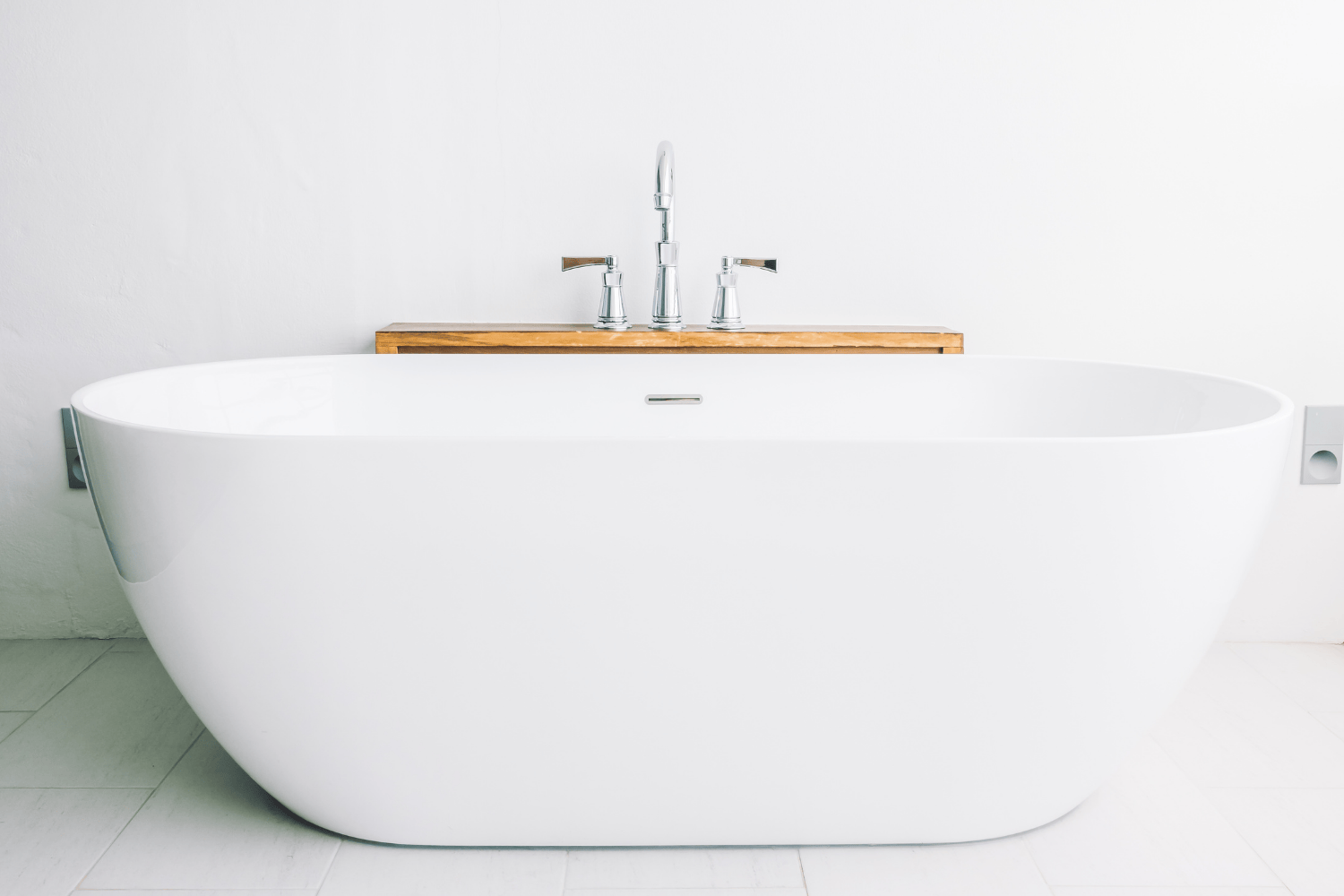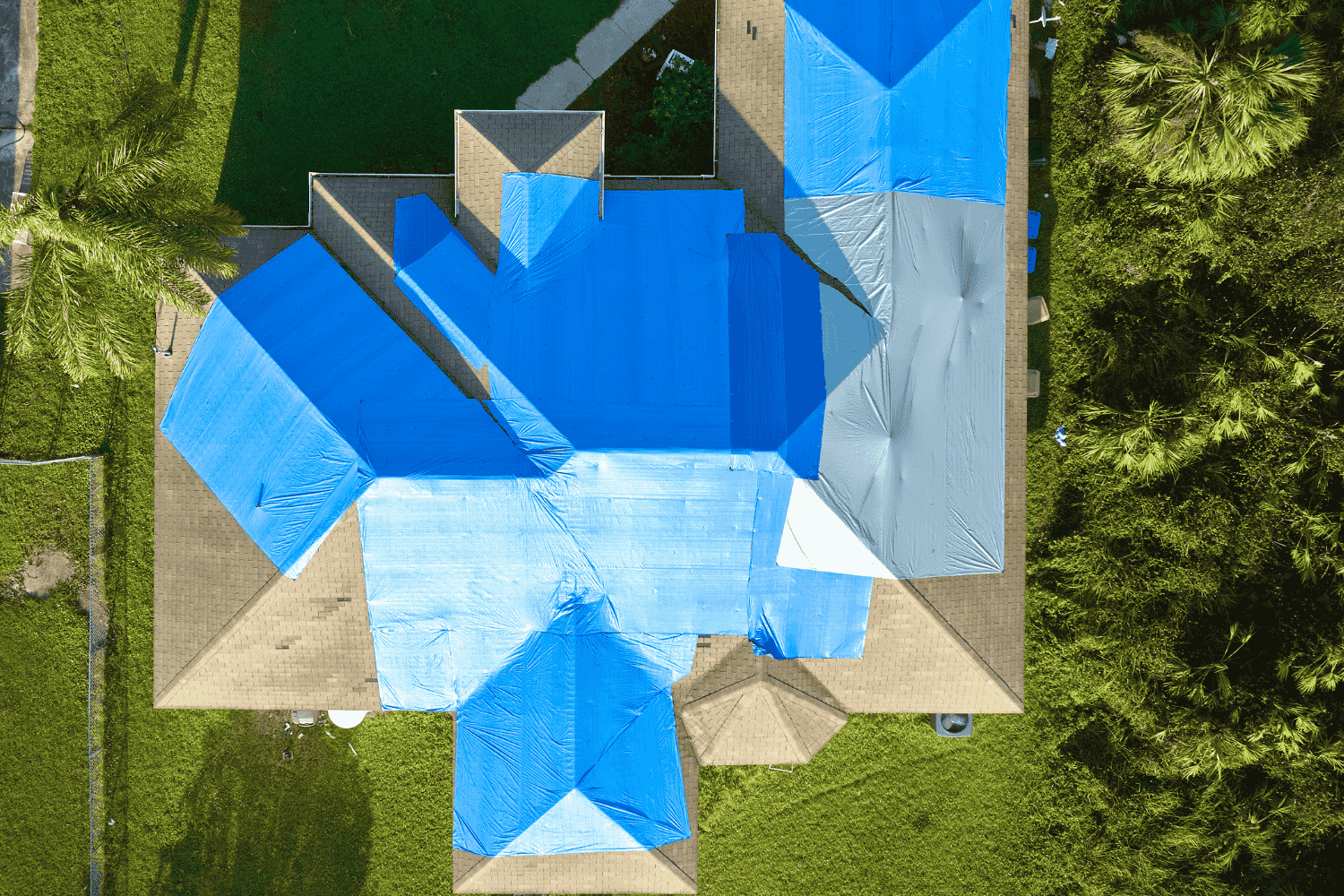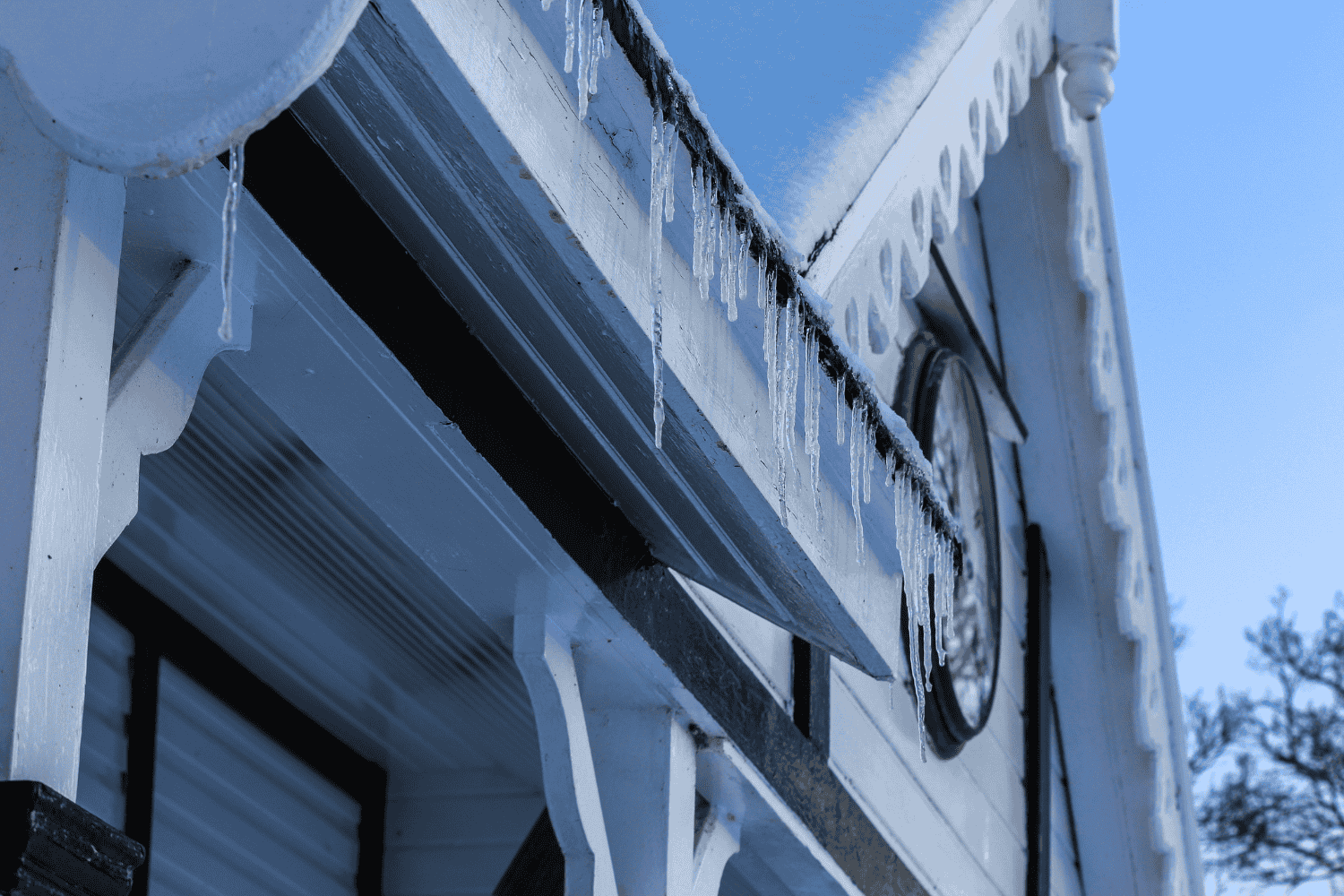Stucco bubbling is caused by trapped air or moisture under the surface, leading to blisters and potential structural damage. Learning what causes it and how to fix or prevent it is essential. This article will explain these issues and solutions.
Key Takeaways
- Stucco bubbling is caused by trapped moisture or air beneath the surface, typically due to water intrusion, poor application techniques, or faulty house wrap.
- Early detection of signs such as white hazy streaks, dark blotches, or blistering can prevent extensive repairs for stucco damage.
- Preventive measures, including proper installation, adequate waterproofing, and regular maintenance, are essential to prolong the lifespan of stucco and minimize bubbling issues.
Understanding Stucco Bubbling
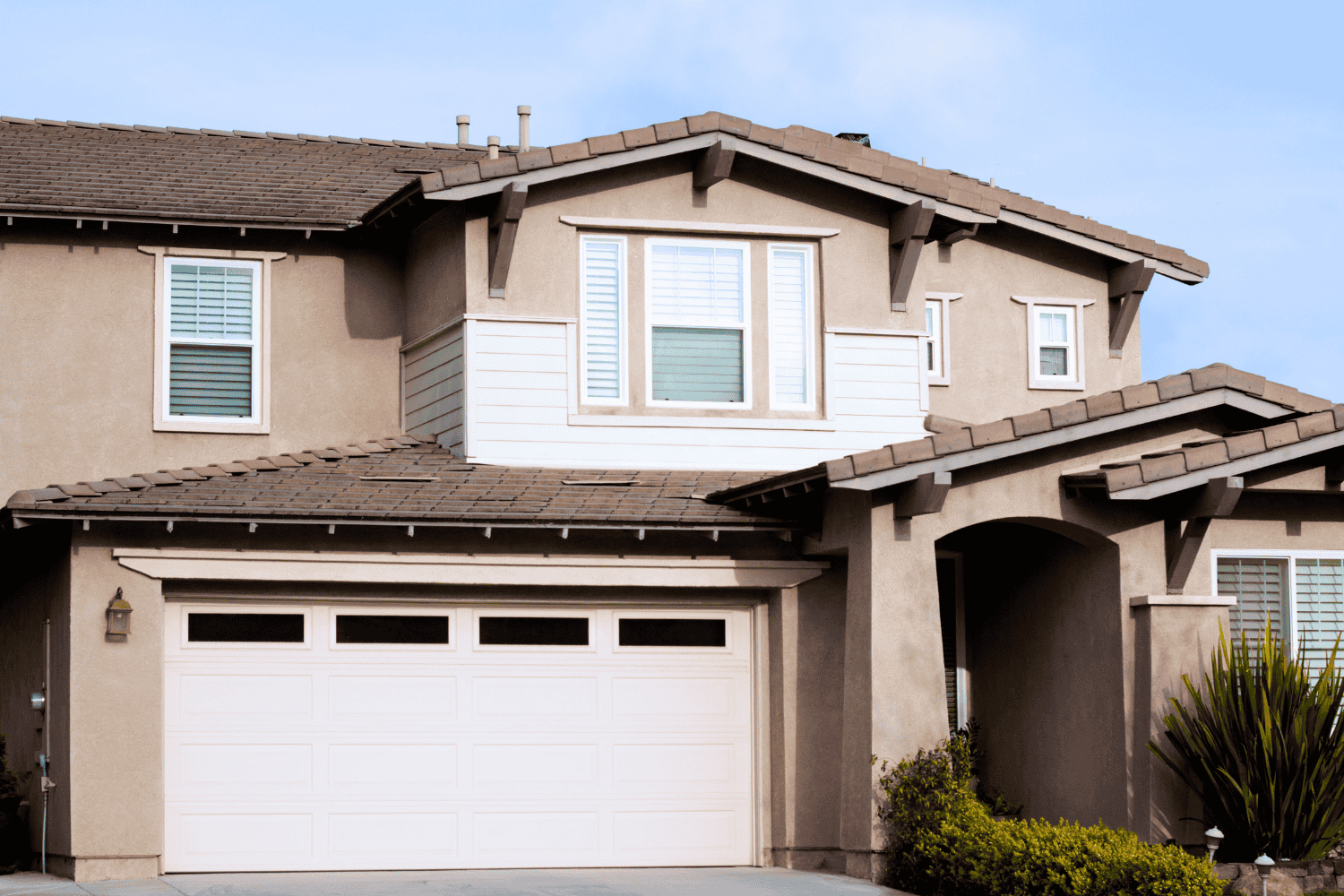
Stucco bubbling occurs when air or moisture becomes trapped beneath the stucco surface, leading to blisters or peeling. This phenomenon can often be seen on homes with older stucco applications or those not installed correctly. The trapped moisture or air causes pressure build-up, resulting in visible bubbles and sometimes causing the stucco to peel away from the wall. The effects are not merely cosmetic; they can lead to more severe structural issues over time if not addressed promptly.
The primary reasons for stucco bubbling include moisture accumulation, incorrect application techniques, and problems with the underlying substrate. Moisture, in particular, is a significant culprit as it can seep through cracks or gaps in the stucco, leading to saturation and subsequent bubbling during the drying process.
Addressing these underlying issues helps in both preventing and repairing stucco bubbling effectively.
Common Causes of Stucco Bubbling
Several factors can lead to stucco bubbling, each contributing to the problem in different ways. Water intrusion is a common cause, where moisture enters through cracks or inadequate waterproofing, leading to swelling and bubbling. Poor application techniques, such as incorrect mixing or curing, can trap air pockets that later cause the stucco to bubble.
Additionally, issues with house wrap, which serves as a moisture barrier, can allow water to penetrate and compromise the stucco’s integrity. Recognizing these causes is essential for preventing and addressing stucco bubbling effectively.
Water Intrusion
Water intrusion is one of the most significant causes of stucco bubbling. When water penetrates stucco through cracks, gaps, or inadequate waterproofing, it leads to degradation and bubbling. This often happens during heavy rain or when the stucco is exposed to prolonged moisture. Once the water enters, it saturates the stucco, causing it to swell and bubble during the drying process. Dark streaks on the stucco surface are common indicators of water damage and potential bubbling issues.
Moreover, salts trapped beneath the stucco surface can expand when exposed to moisture, causing pressure that results in blistering and bubbling. This phenomenon, known as efflorescence, often manifests as white hazy streaks on the stucco.
Determining if the bubbling is due to moisture intrusion is important, as it may necessitate professional evaluation to assess the damage and appropriate repair measures.
Poor Application Techniques
Improper application techniques are another common cause of stucco bubbling. Using incorrect methods, such as uneven thickness or inadequate drying times, can lead to air pockets being trapped in the stucco. These air pockets eventually cause bubbles to form on the surface.
Additionally, the application of stucco requires attention to detail; insufficient screws or nails to attach the wire lath to the plywood can result in weak adhesion and subsequent bubbling. Contractors adhering to best practices during installation helps prevent these issues.
House Wrap Issues
House wrap plays a vital role in preventing moisture from penetrating the stucco. However, if the house wrap is improperly installed or damaged, it can allow water to invade the stucco, leading to bubbling. Water penetration through compromised house wrap saturates the stucco, causing it to swell and bubble.
Installing and maintaining house wrap correctly protects the stucco and extends its longevity.
Identifying Signs of Stucco Bubbling
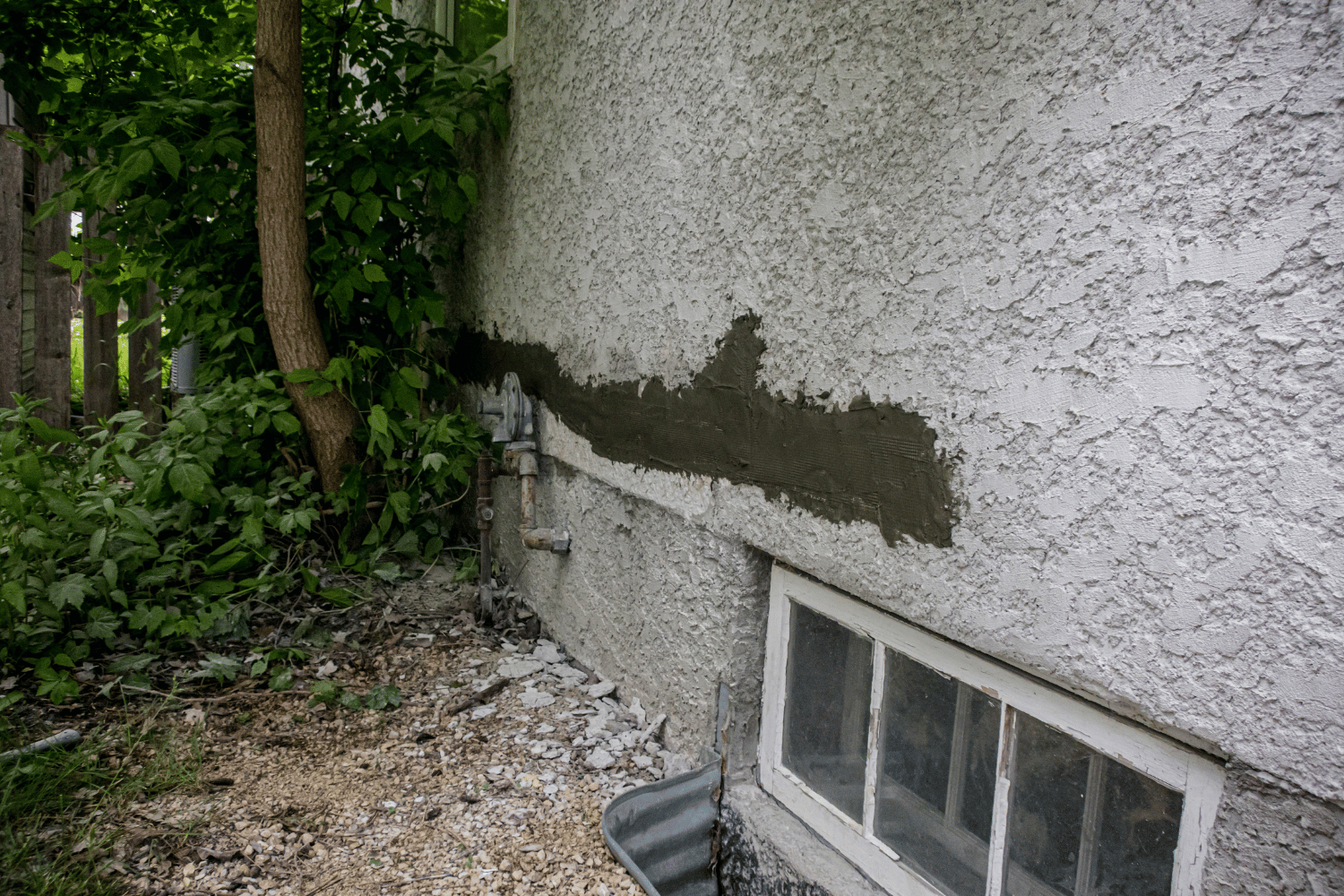
Early detection of stucco bubbling signs can prevent extensive repairs and costly damages. Stucco bubbling often occurs due to moisture being trapped beneath the surface, leading to blistering. Common signs include white hazy streaks, dark blotches, and visible blisters on the stucco wall.
Routine inspections can help catch these issues early, allowing for timely intervention and minimizing the risk of severe water damage.
White Hazy Streaks
White hazy streaks on stucco often indicate moisture problems beneath the surface. These streaks are typically caused by efflorescence, where salts from the stucco material are drawn to the surface by moisture.
A thorough visual inspection is necessary to reveal cracks, holes, or discoloration that might indicate water damage. Detecting such streaks early can prevent more extensive problems later.
Dark Blotches
Dark blotches on stucco surfaces are often a sign of underlying water damage. These blotches typically indicate that moisture has penetrated the stucco and is causing issues beneath the surface. If the wood substrate has water damage or expanding salts, it can exacerbate the bubbling problem.
Promptly addressing these dark blotches can prevent further stucco deterioration.
Blistering
Blistering in stucco occurs when salts expand or are trapped behind the surface, causing the stucco to bubble and peel. This is often a result of extreme water damage, where the finish coat begins to delaminate from the wall. Walls exposed to prolonged water exposure are more susceptible to blistering, making it crucial to address any water intrusion issues promptly.
Blistering and peeling stucco visually indicate severe bubbling issues. When moisture gets trapped behind the paint, it can lead to the exterior paint bubbling on smooth stucco surfaces. Routine inspections and maintenance can catch these issues early, preventing extensive damage and costly repairs.
Preventive Measures for Stucco Bubbling
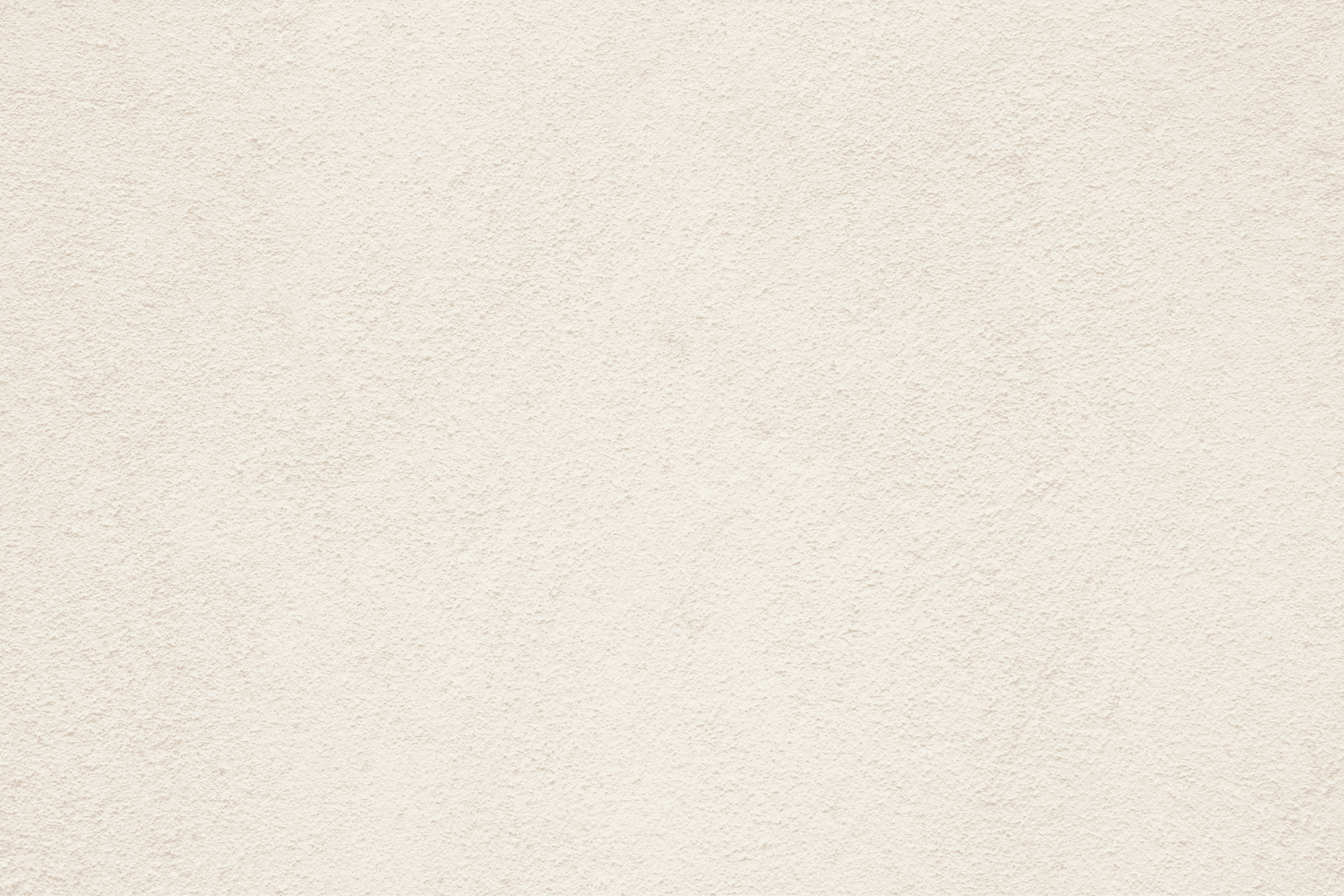
Proactive measures to prevent stucco bubbling can save homeowners from significant trouble and expense. Proper installation, waterproofing, and regular maintenance ensure the longevity and durability of your stucco wall.
Promptly addressing issues can extend your home’s exterior lifespan and maintain its aesthetic appeal.
Proper Installation
Engaging skilled professionals for stucco installation helps prevent future bubbling issues. Proper application methods, such as ensuring even thickness and adequate curing times, help create a strong bond and prevent air pockets from forming.
Professionals adhere to best practices to ensure a durable and long-lasting stucco finish.
Adequate Waterproofing
Applying elastomeric paint is an effective method to enhance waterproofing and protect stucco from moisture. This type of paint creates a flexible, durable barrier that resists cracking and peeling, ensuring that your stucco remains intact even under harsh weather conditions. Hiring a stucco specialist ensures proper sealing and waterproofing, preventing future water intrusion and extending your stucco’s lifespan.
Modern stucco systems also incorporate advanced insulation properties, significantly improving energy efficiency and reducing moisture-related issues. These systems are designed to provide superior moisture resistance, helping to manage moisture levels and prevent stucco bubbling. Investing in high-quality materials and proper application methods results in a more durable and low-maintenance exterior.
Regular Maintenance
Regular inspections of stucco surfaces can help identify early signs of water damage, such as bubbling or peeling. For minor repairs, it’s crucial to remove loose or damaged stucco before applying a patching compound, ensuring a stable foundation for the repair.
Routine maintenance and timely interventions can stop minor issues from escalating into costly repairs for home owners, preserving your home’s exterior integrity and appearance.
Fixing Bubbling Stucco
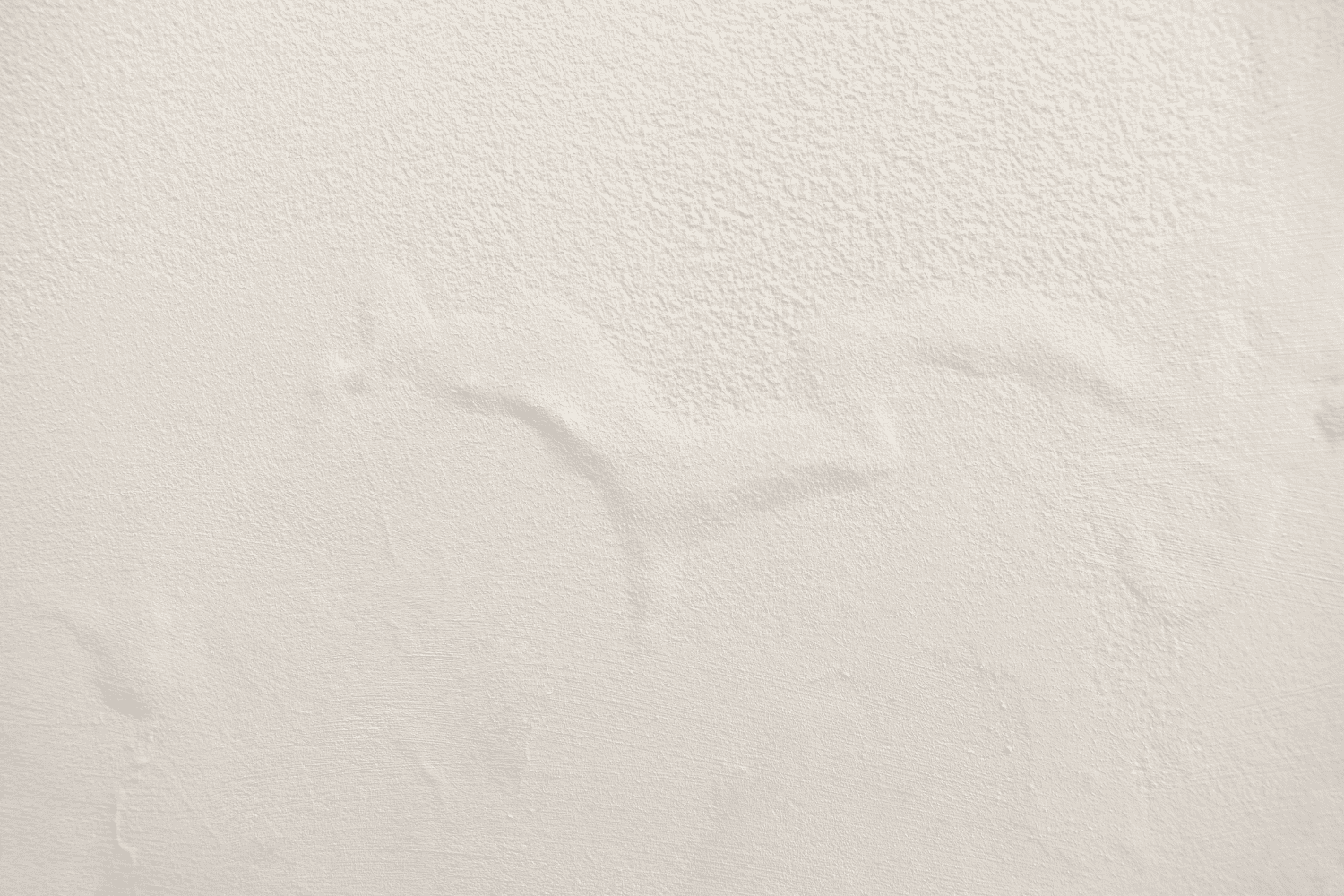
Fixing bubbling stucco involves assessing the damage extent and determining the appropriate repair method. Homeowners should evaluate whether the damage is superficial or if there are underlying issues that need professional attention.
While DIY methods can be effective for minor stucco repairs, extensive damage may require professional restoration to address moisture intrusion root causes and prevent future problems.
Assessing the Damage
Tapping the stucco surface with a rubber mallet can identify hollow areas, indicating separation from the lath support and suggesting more severe damage. A hollow sound when tapping the stucco signals the need for a thorough inspection and possibly professional assessment to determine the damage extent and necessary repairs.
DIY Repairs
For minor stucco repairs, homeowners can start by scraping off the bubbles and applying a primer to prepare the surface for repainting. Mixing the stucco repair material to a consistency like peanut butter ensures optimal adhesion and durability during the application process. After applying the repair mix, feathering the edges with a damp brush can help achieve a smoother finish.
Addressing any underlying moisture issues before proceeding with repairs is essential. Filling small stucco cracks with stucco patch or acrylic caulk after cleaning the area can prevent water from seeping in and causing further damage.
Regular inspections and minor repairs maintain the stucco’s integrity and prevent extensive damage.
Professional Restoration
For extensive stucco damage or persistent moisture problems, hiring a professional ensures that underlying issues are effectively addressed.
Professionals can conduct in-depth assessments and implement proper sealing and waterproofing measures during restoration. This approach repairs visible damage and addresses root causes, preventing future problems and extending your stucco’s lifespan.
Long-Term Solutions for Durable Stucco
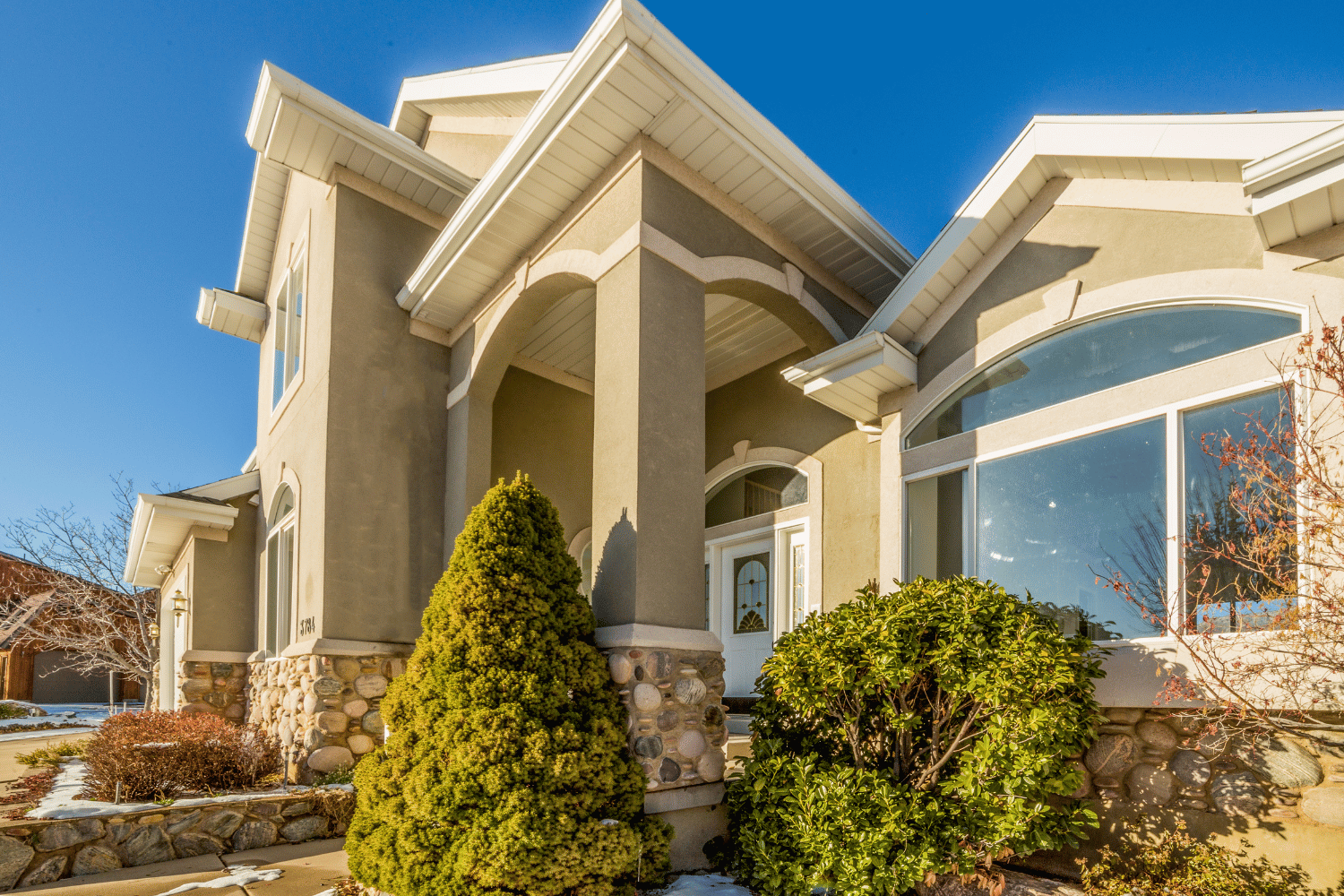
Long-term solutions can significantly enhance your stucco wall’s durability and aesthetic appeal. Advanced stucco technologies and materials, such as sculpted stucco trim and acrylic finish coats, offer superior resistance to weather elements and reduce maintenance requirements.
These solutions prolong your home’s exterior lifespan and improve its energy efficiency and overall performance.
Sculpted Stucco Trim
Sculpted stucco trim adds a decorative touch to your home’s stucco exterior while providing additional structural protection against environmental wear. These trims are more cost-effective than traditional trims over time and enhance the visual appeal of the structure. Using sculpted stucco trim can elevate both the durability and aesthetic appeal of your home, making it a worthwhile investment.
Sculpted stucco trim also contributes to the structural integrity and longevity of the stucco installation. By adding this elegant finish, homeowners can improve the overall resilience of their stucco walls against external elements, ensuring a long-lasting and beautiful exterior.
Acrylic Finish Coat
Unlike traditional paint, which may peel or require frequent touch-ups, acrylic finishes are less prone to damage and fading, making them a low-maintenance solution for exteriors. These finishes offer a variety of textures and colors, enhancing the stucco surface’s aesthetic appeal. The application process for acrylic finishes is generally more straightforward than traditional paint, providing a smoother finish that adheres better to stucco surfaces.
Applying an acrylic finish coat offers numerous benefits, including:
- Improved durability against weather elements
- Reduced likelihood of bubbling
- Less prone to damage and fading compared to traditional paint
- Low-maintenance solution for exteriors
- Variety of textures and colors, enhancing the stucco surface’s aesthetic appeal
- More straightforward application process than traditional paint
- Smoother finish that adheres better to stucco surfaces
Acrylic finishes offer better breathability than standard paint, helping manage moisture levels and prevent stucco bubbling issues. This improved moisture management not only enhances the durability of the stucco but also contributes to a healthier home environment by reducing the risk of mold and mildew growth.
By choosing acrylic finishes, homeowners can enjoy a more resilient and visually appealing exterior with minimal maintenance requirements.
Improved Insulation and Moisture Protection
Modern stucco systems are designed to enhance the durability and longevity of the material, addressing common issues like bubbling and water damage. Innovative insulation materials used in these systems provide superior thermal resistance, keeping homes warmer in winter and cooler in summer. This improved insulation not only enhances comfort but also contributes to energy savings, making stucco an even more attractive option for homeowners.
The moisture protection provided by modern stucco systems includes advanced moisture barriers that help prevent water penetration and mold growth, ensuring a more stable environment. By combining enhanced insulation and effective moisture control, these systems significantly extend the lifespan of a home’s exterior while reducing maintenance costs.
These advanced stucco technologies offer long-term benefits, ensuring a durable, low-maintenance exterior that withstands the elements.
Summary
In summary, preventing and fixing stucco bubbling involves understanding its causes, identifying early signs, and taking proactive measures. Proper installation, adequate waterproofing, and regular maintenance are crucial to maintaining the integrity of your stucco walls. When issues do arise, assessing the damage and choosing the appropriate repair method, whether DIY or professional restoration, can prevent further complications. Long-term solutions like sculpted stucco trim and acrylic finish coats offer enhanced durability and aesthetic appeal, ensuring that your home’s exterior remains beautiful and resilient for years to come. By following these guidelines, homeowners can effectively manage and prevent stucco bubbling, preserving both the function and appearance of their homes.
Frequently Asked Questions
What causes stucco bubbling?
Stucco bubbling is primarily caused by trapped air or moisture beneath the surface, often due to water intrusion, poor application techniques, or problems with the underlying substrate. Addressing these issues promptly can prevent further damage.
How can I prevent stucco bubbling?
To prevent stucco bubbling, ensure proper installation by skilled professionals, use adequate waterproofing products like elastomeric paint, and maintain the surface regularly to identify and address potential issues early.
What are the signs of stucco bubbling?
The signs of stucco bubbling are white hazy streaks, dark blotches, and visible blisters on the wall. Regular inspections are essential for early detection of these issues.
Can I fix stucco bubbling myself?
You can fix minor stucco bubbling yourself by scraping off the bubbles, applying primer, and repainting. However, for extensive damage, it’s best to consult a professional to address underlying issues.
What are the benefits of using an acrylic finish coat on stucco?
Using an acrylic finish coat on stucco significantly enhances durability, weather resistance, and aesthetic appeal while reducing maintenance needs. It’s a practical choice that ensures your stucco looks great and lasts longer.

